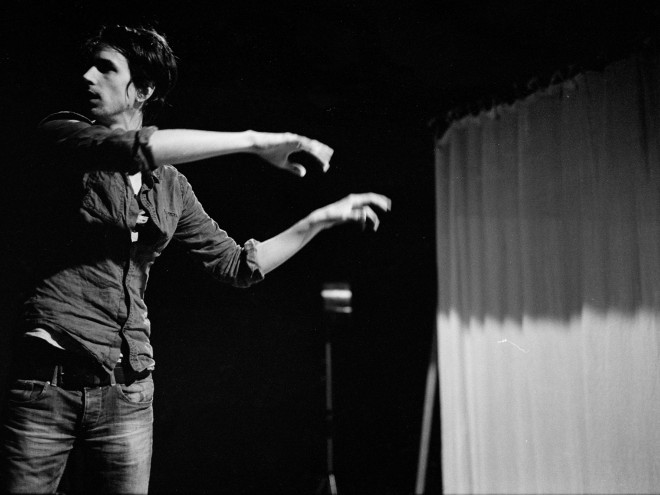
Bart Meuleman: After Yvonne, Princess of Burgundy, Gombrowicz’ first stage play, you are going to stage The Marriage, his second play. That’s a singular choice!
Timeau De Keyser: On stage we want to develop and convey to the audience the depth and magic that is created when Gombrowicz’ oeuvre begins to communicate internally. We are doing this by performing The Marriage as a sort of sequel to Yvonne. In actual fact, Yvonne and The Marriage have a lot in common. The characters are almost identical. But whereas Yvonne does have a plot, The Marriage has the logic of a dream. The possibilities posed by the language are the real driving factor here. You will note that The Marriage (1947) was written twelve years after Yvonne, by which time playwriting allowed Gombrowicz more scope. He used the medium itself more to show how identity is shaped within the social fabric. For example, in The Marriage characters can change role, with the result that their relationships with each other also change, and their social position.
Bart: Hence the connection for you between theatre and society?
Timeau: Yes, that’s right. Gombrowicz presents characters in a shapeless, almost abstract world. It is in that world that the characters are invested with form through their performance. A society comes into being through the acting. The play begins with the protagonist, Hendryk, who cannot remember who he was. The other characters don’t seem to know who they are or what they mean to each other either. Only by naming the other characters as his father and mother, is that role imposed on them and a mutual bond, an understanding, a form develops. Gombrowicz’ theory about the conflict between form and formless, between immaturity (formless) and adulthood (form) can be made to correspond to the principles of play acting.
Bart: How will the acting here differ from the acting in Yvonne?
Timeau: The Marriage is the next step, both in terms of narrative – so we will perform it as a sort of sequel to Yvonne – and staging. We will evolve, just as Gombrowicz did. When we see how the structure and language developed in The Marriage, and when we understand that the metatheatrical has become even more important, then those things cannot fail to impact on the staging and acting.
Bart: In Yvonne a separate role was reserved for music, namely Simon De Winne singing.
Timeau: We’re expanding that role. As well as Simon, another actor Marjan De Schutter will be singing and we have invited two ‘trained’ singers: Sander De Winne and Lieven Gouwy. Together we are going to look at how we can integrate Flemish polyphonic music and how we can have composition techniques interact with Gombrowicz’ script.
Bart: Why Flemish polyphony?
Timeau: Gombrowicz uses themes and motifs in his plays which he repeats. The script becomes musical and loses its narrative or psychological character. We want to intensify and develop this by linking these textual motifs to musical techniques from Flemish polyphony. Can you integrate certain melodies into performing the script? Can you have melodies linked to certain words echo what was said earlier? Or announce what is to come? These are just a few of the questions which intrigue us. In Yvonne movement related to the script; here we look for the relationship between The Marriage and music.
← Back to overview